Clubshaft Behaviour
“Throughout your explanations, you’ve described clubhead lag as the clubshaft bending away from the clubhead’s direction of travel. Doesn’t the clubshaft also bend downwards through impact?”
Absolutely. When discussing clubhead lag, I do so from a simplistic, two-dimensional perspective. In reality, the clubshaft’s behaviour is much more complex. Before I explain how the shaft really moves during the swing, I want to discuss why I generally don’t share this information with my students and readers.
Clubshaft behaviour is an esoteric subject. It’s of little interest to anyone outside of scientists, club fitters and golf nerds. For the typical golfer, their only concern is if their own shafts are the correct length, weight and flex. What a shaft actually does during a swing is neither here nor there.
When I explain clubhead lag, or indeed any topic, I’m mindful of two things: who my audience are, and what am I trying to get across to them. For the most part, my audience is comprised of two groups:
Clubshaft behaviour is an esoteric subject. It’s of little interest to anyone outside of scientists, club fitters and golf nerds. For the typical golfer, their only concern is if their own shafts are the correct length, weight and flex. What a shaft actually does during a swing is neither here nor there.
When I explain clubhead lag, or indeed any topic, I’m mindful of two things: who my audience are, and what am I trying to get across to them. For the most part, my audience is comprised of two groups:
- Golfers - of all abilities - who wish to better understand the swing to improve their games
- Instructors who wish to better understand the swing to help improve their student's games
Throughout the swing a clubshaft can flex in three orientations. These are:
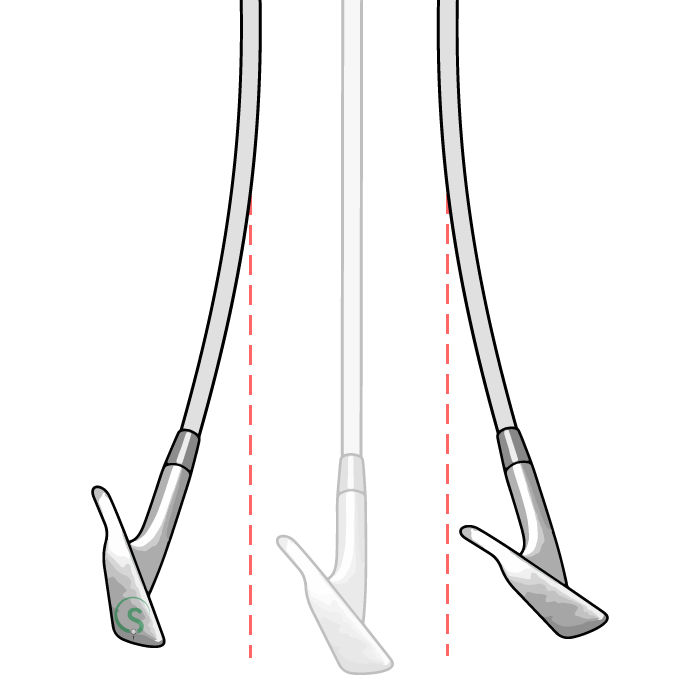
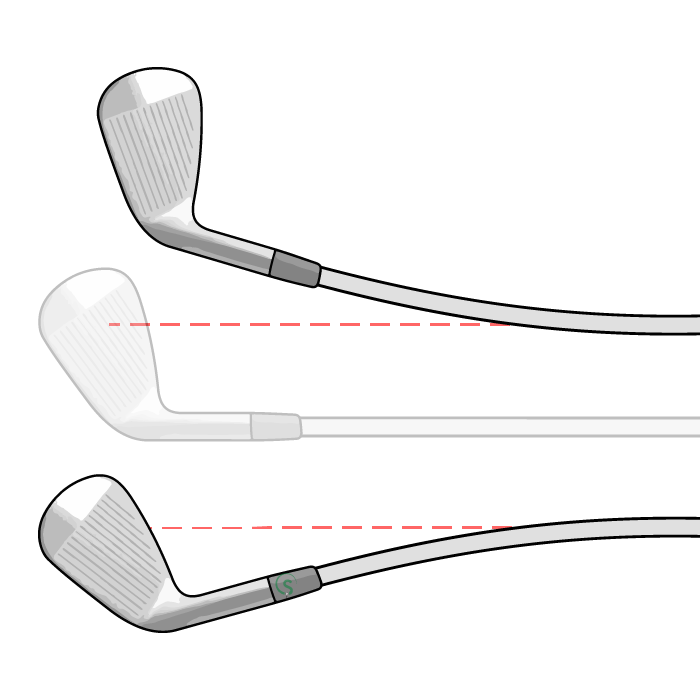
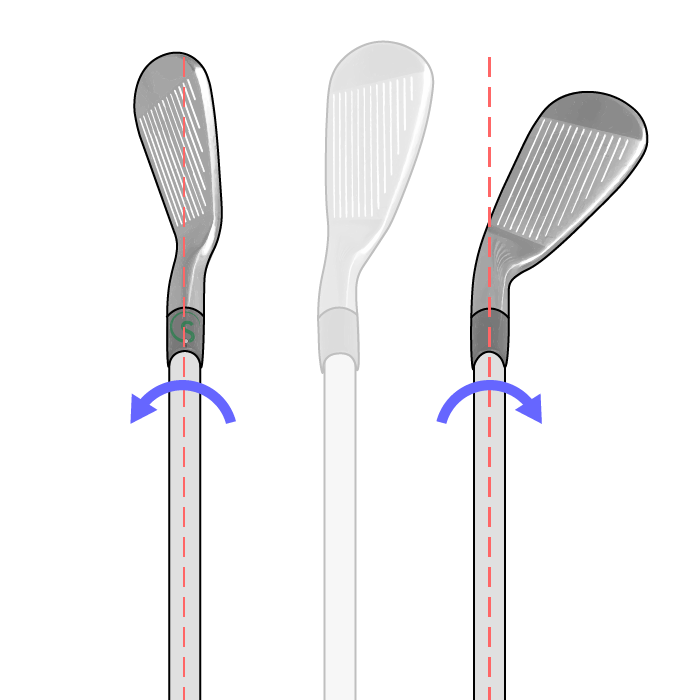
Lag and Lead
Toe Up and Toe Down
Anticlockwise and Clockwise Twisting

Lag and Lead

Toe Up and Toe Down

Anticlockwise and Clockwise Twisting
So what happens to the shaft during a typical swing? This isn’t an easy question to answer. Firstly what is a “typical” swing? Each golfer has their own unique motion with its own unique clubshaft signature. Comparing just two golfers can give wildly different results.
To compound this difficulty, an individual golfer may appear to produce consistent, repeatable swings, but they’re usually not. Especially when we measure down to the millimetre, degree, and split-second.
The solution is to collate a huge amount of data from multiple golfers and multiple swings, and amalgamate these results into an “average” swing. This is where our second issue arises. Studying a clubshaft in detail is prohibitively expensive, time consuming, and requires specialist equipment.
For this reason, studies into clubshaft behaviour are often severely limited in scope - sometimes only studying one golfer, or worse yet, a robot golfer - a machine built to swing clubs.
This doesn’t invalidate these studies, but it does mean you should exercise caution when relating their results to what may occur in your own swing.
With that said, let’s take a look at what these studies reveal. Below are two graphs, each showing generally what occurs during the swing.
To compound this difficulty, an individual golfer may appear to produce consistent, repeatable swings, but they’re usually not. Especially when we measure down to the millimetre, degree, and split-second.
The solution is to collate a huge amount of data from multiple golfers and multiple swings, and amalgamate these results into an “average” swing. This is where our second issue arises. Studying a clubshaft in detail is prohibitively expensive, time consuming, and requires specialist equipment.
For this reason, studies into clubshaft behaviour are often severely limited in scope - sometimes only studying one golfer, or worse yet, a robot golfer - a machine built to swing clubs.
This doesn’t invalidate these studies, but it does mean you should exercise caution when relating their results to what may occur in your own swing.
With that said, let’s take a look at what these studies reveal. Below are two graphs, each showing generally what occurs during the swing.
Toe Up & Toe Down
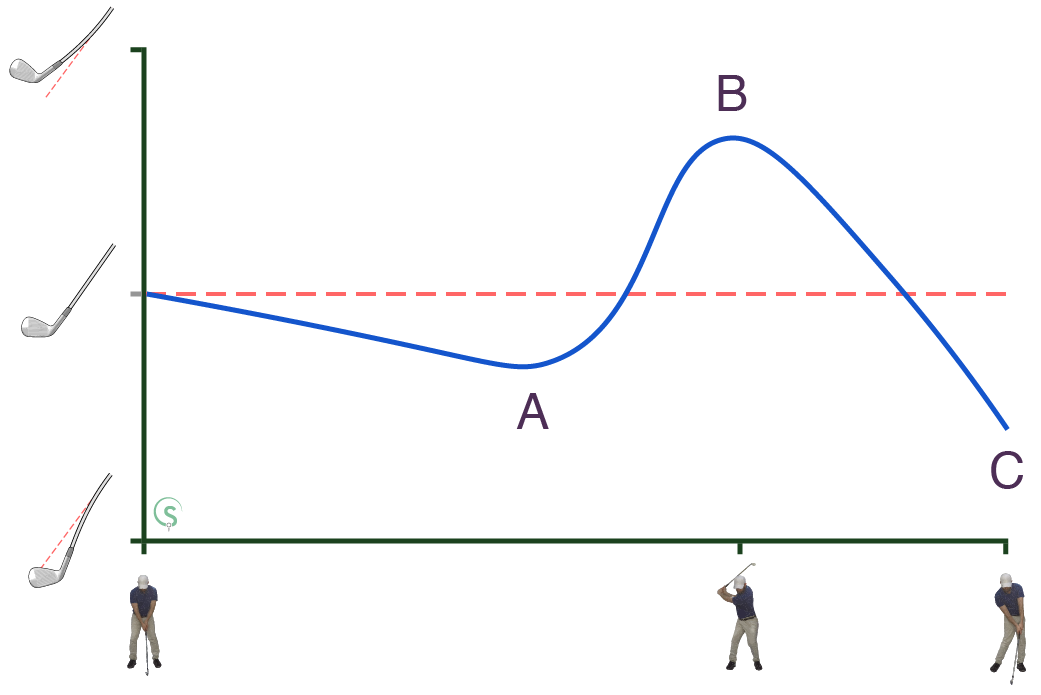
Along the horizontal axis is time, measured from address to impact. You’ll note the top of the backswing isn’t exactly in the middle, as the backswing takes longer than the downswing. Along the vertical axis is the amount of Toe Up and Toe Down. In the middle is a neutral shaft with no flex in either direction. The further down the graph, the more Toe Down, and the further up the graph, the more Toe Up.
So what does this graph show us? At address the shaft is stationary and has no flex in either direction.
So what does this graph show us? At address the shaft is stationary and has no flex in either direction.
- During the backswing the club is moved upwards, causing the shaft to bend downwards. It reaches its peak Toe Down position just before the top of the backswing.
- Prior to the top of the backswing, the hands and club begin to slow down, before stopping completely and changing direction. This causes the club to lose its Toe Down flex before bending in the other direction. Maximum Toe Up flexion is reached around the top of the backswing.
- During the downswing the shaft loses its Toe Up flexion before bending downwards again. At impact, the shaft is in a Toe Down alignment.
Lag & Lead
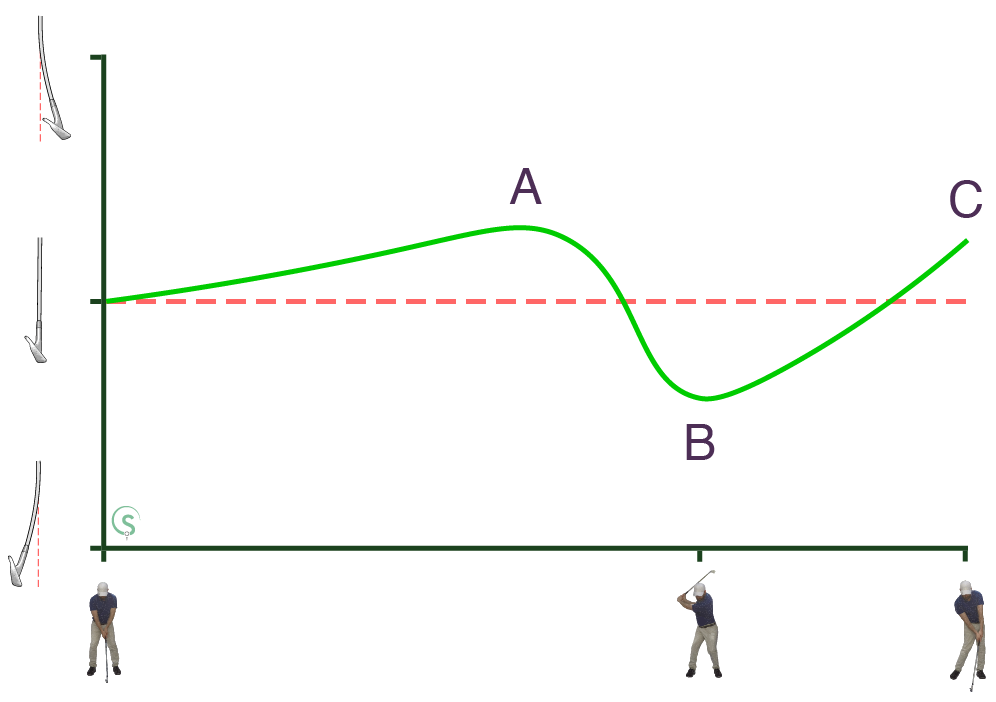
You’ll note although the magnitudes are different (there’s generally more flexion up and down than there is backwards and forwards), the graphs are almost mirror images of each other.
- During the backswing the club is moved away from the ball, causing the shaft to bend forwards. It reaches its maximum Lead position just before the top of the backswing.
- The hands and club slow down and begin to change direction from the top of the backswing. This causes the club to move from a Leading flex to a Lagging flex - reaching its maximum lag around the top of the backswing.
- During the downswing the shaft loses its Lag before moving into a Lead flexion just prior to impact.
So that, generally speaking, is how the clubshaft behaves from address to impact. Now you may be wondering why the shaft leans forwards and downwards at impact. It’s counterintuitive given that the club is moving forwards and downwards also - surely the clubhead should be flexing away from the direction of travel.
There are three explanations for this behaviour.
There are three explanations for this behaviour.
1) Offset Centre of Gravity
Below are diagrams of an iron. They show how the clubhead’s centre of gravity is offset from the length of the clubshaft.
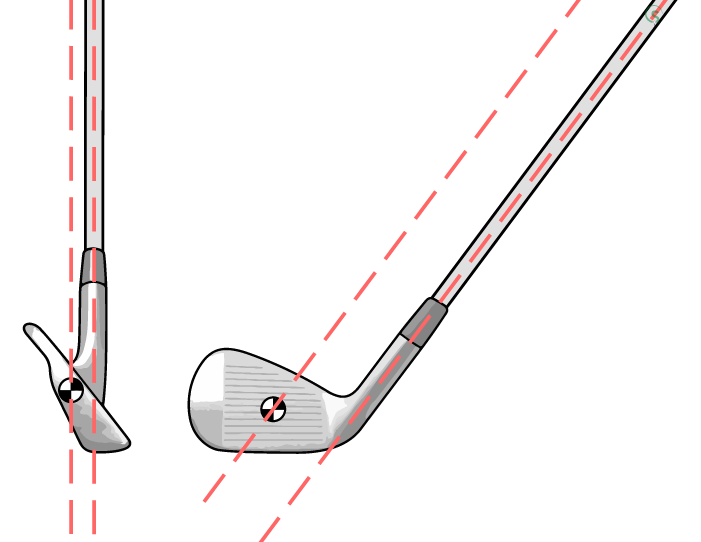
When you swing the club, you’re applying a centripetal force to it. In layman’s terms, a force that causes the club to move in a circular fashion as you swing it around your body. You’re applying this force to the clubshaft, as that’s what you’re holding.
As the club picks up speed, another force acts upon it - a centrifugal reaction. This pulls the club away from your body. However, this force isn’t pulling along the length of the clubshaft, it’s pulling on the clubhead’s centre of gravity.
The clubshaft will flex to correct the offset between the clubhead’s centre of gravity and the length of the shaft, so that the centrifugal reaction is perpendicular to the centripetal force. In other words, Lead and Toe Down flexion.
As the club picks up speed, another force acts upon it - a centrifugal reaction. This pulls the club away from your body. However, this force isn’t pulling along the length of the clubshaft, it’s pulling on the clubhead’s centre of gravity.
The clubshaft will flex to correct the offset between the clubhead’s centre of gravity and the length of the shaft, so that the centrifugal reaction is perpendicular to the centripetal force. In other words, Lead and Toe Down flexion.
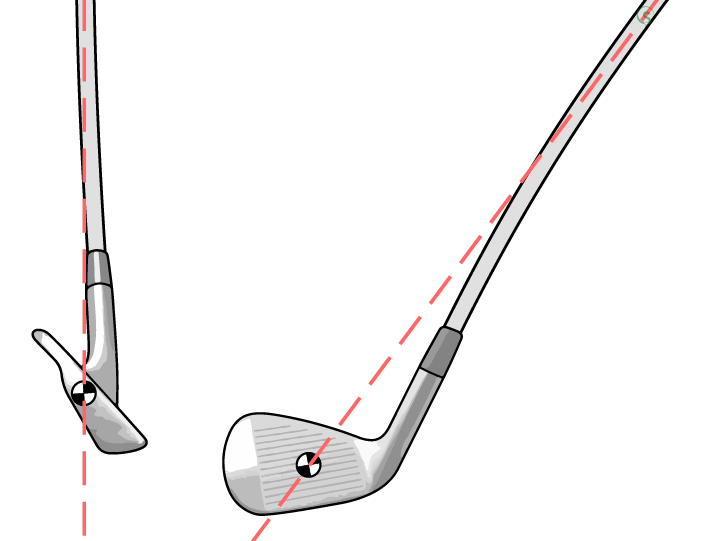
2) Rebound
The second explanation is due to what occurred before the shaft has moved to a Lead / Toe Down flexion. As per the above graphs, at the top of the backswing the shaft has reached its maximum Lag and Toe Up flexion. Once the motion responsible for this flexion has changed (i.e. the hands have reached the top of the swing, stopped, and are now travelling in the opposite direction), the shaft will rebound to return to its natural unflexed state.
If you’ve ever held a plastic ruler over a desk and ‘twanged’ it, you’ll know how this action occurs. When pulling down on the end of the ruler, you cause it to flex over the edge of the desk. Once you release the end, the ruler doesn’t just return to its straight alignment. It rebounds past it and it flexes upwards. The ruler will flex up and down several times by diminishing amounts until all energy is lost and it returns to its natural, straight state.
This is what occurs to the clubshaft during the downswing. After having been bent backwards and upwards in a Lag / Toe Up condition, it will rebound forwards and downwards in a Lead / Toe Down condition as the clubhead reaches impact.
If you’ve ever held a plastic ruler over a desk and ‘twanged’ it, you’ll know how this action occurs. When pulling down on the end of the ruler, you cause it to flex over the edge of the desk. Once you release the end, the ruler doesn’t just return to its straight alignment. It rebounds past it and it flexes upwards. The ruler will flex up and down several times by diminishing amounts until all energy is lost and it returns to its natural, straight state.
This is what occurs to the clubshaft during the downswing. After having been bent backwards and upwards in a Lag / Toe Up condition, it will rebound forwards and downwards in a Lead / Toe Down condition as the clubhead reaches impact.
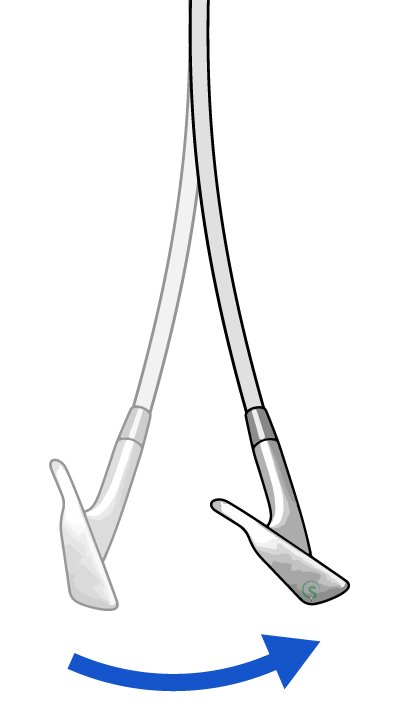
3) Outracing the Hands
The final reason for Lead / Toe Down flexion at impact is due to the difference between the speed of the hands and the clubhead during the downswing.
For most golfers, at the beginning of the downswing their left wrist remains in its cocked alignment. During this time, the hands and clubhead travel at the same RPM. In other words, they are both moving around the body at the same pace (but that’s not to say same speed - as the clubhead is further from the centre of rotation than the hands).
At some point during the downswing, the left wrist begins to uncock and also rotate anticlockwise (In TGM terms, the 2nd and 3rd Power Accumulators are releasing). When this occurs, the clubhead begins to accelerate and is travelling exponentially faster than the hands.
By the time impact occurs, the clubhead is outracing the hands. So much so, the hands can’t keep up, causing the shaft to bend in the direction of travel, forwards and downwards - with Lead and Toe Down flexion.
For most golfers, at the beginning of the downswing their left wrist remains in its cocked alignment. During this time, the hands and clubhead travel at the same RPM. In other words, they are both moving around the body at the same pace (but that’s not to say same speed - as the clubhead is further from the centre of rotation than the hands).
At some point during the downswing, the left wrist begins to uncock and also rotate anticlockwise (In TGM terms, the 2nd and 3rd Power Accumulators are releasing). When this occurs, the clubhead begins to accelerate and is travelling exponentially faster than the hands.
By the time impact occurs, the clubhead is outracing the hands. So much so, the hands can’t keep up, causing the shaft to bend in the direction of travel, forwards and downwards - with Lead and Toe Down flexion.
So now you know how and why the clubshaft distorts the way it does during the swing. But as if that wasn’t complex enough, it’s still a simplification of what really occurs. The shaft doesn’t just flex in one direction per orientation. During the downswing, the shaft will have Lag and Lead and Toe Up and Toe Down flexion all at the same time!
Look at (an exaggerated account of) what occurs when the shaft is transitioning from Toe Up to Toe Down flexion.
Look at (an exaggerated account of) what occurs when the shaft is transitioning from Toe Up to Toe Down flexion.

It doesn’t uniformly oscillate from Lag to Lead, or Toe Up to Toe Down like a metronome. The shaft waves, bending in opposite directions in different places.
You can add to this complexity several more topics: the clockwise and anticlockwise twisting I’ve omitted in the explanations above, how different shaft materials affect behaviour, how shaft bending isn’t uniform along its length (kick points), how shafts aren’t uniform in cross sectional thickness resulting in a “spine” along their length, etc etc.
So back to my original point about my audience and the content I create. Will any of the above information make you a better golfer? No. I’d argue most, if not all, of the world’s greatest golfers from today and yesteryear were and are completely ignorant of the above. It hasn’t adversely affected their scores in the slightest.
But here’s where it can adversely affect your scores. If you knew the best golfers hold their club in a particular way, or rotate their hips just so, or performed whatever motion in producing a great swing, wouldn’t you want to do the same? Absolutely, you’d want to emulate their success.
And there’s the rub. The most common and devastating fault with a golf swing is flipping the wrists through impact. It’s the reason the Flat Left Wrist is the foundation of The Golfing Machine, and Homer Kelley’s #1 Imperative, without which, nothing else works as it should.
If the average golfer, looking for ways to improve, was taught their clubshaft must kick forwards through impact, what would they do? They would manufacture that as best they can - by slowing down the hands around impact and allowing the clubhead to overtake, flipping their wrists in the process. It’s a recipe for terrible golf and the frustration that follows.
The intent of my instruction, books, videos etc is to teach you concepts and techniques that will make you a better golfer. This is why I explain clubhead lag the way I do.
You can add to this complexity several more topics: the clockwise and anticlockwise twisting I’ve omitted in the explanations above, how different shaft materials affect behaviour, how shaft bending isn’t uniform along its length (kick points), how shafts aren’t uniform in cross sectional thickness resulting in a “spine” along their length, etc etc.
So back to my original point about my audience and the content I create. Will any of the above information make you a better golfer? No. I’d argue most, if not all, of the world’s greatest golfers from today and yesteryear were and are completely ignorant of the above. It hasn’t adversely affected their scores in the slightest.
But here’s where it can adversely affect your scores. If you knew the best golfers hold their club in a particular way, or rotate their hips just so, or performed whatever motion in producing a great swing, wouldn’t you want to do the same? Absolutely, you’d want to emulate their success.
And there’s the rub. The most common and devastating fault with a golf swing is flipping the wrists through impact. It’s the reason the Flat Left Wrist is the foundation of The Golfing Machine, and Homer Kelley’s #1 Imperative, without which, nothing else works as it should.
If the average golfer, looking for ways to improve, was taught their clubshaft must kick forwards through impact, what would they do? They would manufacture that as best they can - by slowing down the hands around impact and allowing the clubhead to overtake, flipping their wrists in the process. It’s a recipe for terrible golf and the frustration that follows.
The intent of my instruction, books, videos etc is to teach you concepts and techniques that will make you a better golfer. This is why I explain clubhead lag the way I do.
